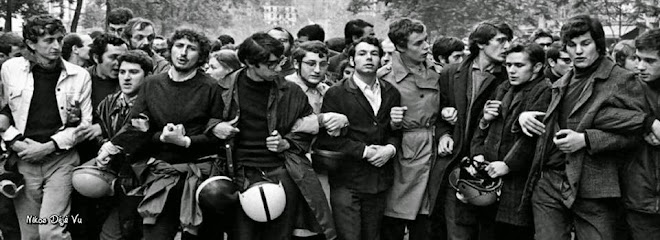Nikos Deja Vu - Allegro Non Troppo - The Firebird (1976) Stravinsky
Allegro Non Troppo is a 1976 Italian animated film directed by Bruno Bozzetto. Featuring six pieces of classical music, the film is a parody of Disney's Fantasia, though possibly more of a challenge to Fantasia. The classical pieces are set to color animation, ranging from comedy to deep tragedy. At the beginning, in between the animation, and at the end are black and white live-action sequences, displaying the fictional animator, orchestra, conductor and filmmaker, with many humorous scenes about the fictional production of the film. Some of these sections mix animation and live action.
The film has been released in two versions, the first includes live action sequences in between the classical pieces. The second version of the film omits these, replacing them with animated plasticine letters spelling out the title of the next piece of music.
In music, an instruction of "allegro ma non troppo" means to play "fast, but not overly so". In the context of this film, and without the "ma", it means Not So Fast!, an interjection meaning "slow down" or "think before you act" and refers to the film's pessimistic view of Western progress (as opposed to the optimism of Disney's original).
Debussy's Prelude a l'apres-midi d'un faune, an elderly satyr repeatedly attempts to cosmetically recapture his youth and virility, all in vain. As the satyr gets smaller and smaller he roams across a vast countryside which turns out to be a woman's body.
Dvorak's Slavonic Dance No. 7, Op. 46, begins in a large community of cave-dwellers. A solitary cave man wants to break away from the group and builds himself a new home. From this point on the rest of the community copies everything that he does. His attempts to break away from them leads to unintended and humorous consequences.
Ravel's Bolero, some slime oozes out of a Coca-Cola bottle. It progresses through fanciful representations of the stages of evolution until man's skyscrapers destroy all that has come before. This segment parallels The Rite of Spring segment from Fantasia. Its opening moment was used as the image for the film poster.
Sibelius's Valse triste, a cat wanders in the ruins of a large house. The cat remembers the life that used to fill the house when it was occupied. Eventually all of these images fade away as does the cat.
Vivaldi's Concerto in C major for 2 Oboes, 2 Clarinets, Strings and Continuo RV 559, a bee attempting to eat a small meal, but is continually interrupted by two lovers sitting down in the grass.
Stravinsky's The Firebird (specifically The Princesses' Khorovod and The Infernal Dance of King Katschey) begins with a lump of clay molded by a monotheistic symbol of the omniscient pyramid, molding first a few unsuccessful creatures with overly awkward limbs, then finally the Adam and Eve as portrayed in Genesis. Adam and Eve then transform into cel animation, and as in Genesis, the serpent comes up to them, offering the fruits of knowledge in the form of an apple. When they both refuse the serpent eats the apple himself, launching him on into a sinful, hellish environment where he is exposed to advertisements and pornography. The serpent eventually returns to Adam and Eve and spits out the apple.
In an epilogue sequence (which features an assortment of short, unidentified orchestral clips instead of a single piece) the film's host asks an animated Frankenstein's monster (identified as "Frankenstini") to retrieve a finale for the movie from a basement storeroom. Frankenstini rejects several of these, but delightedly approves of one which depicts a ridiculously escalating war, ending with the earth exploding. The serpent from the Firebird Suite pops out and bites him on the nose, and the words "HAPPY END" drop on them.
The uncut film also contains live action sequences that parody the Deems Taylor introductions from Fantasia. "The Presenter" (Maurizio Micheli) introduces "The Orchestra Master" (Nestor Garay), an orchestra made up of little old ladies and "The Animator" (Maurizio Nichetti). Each sequence portrays action (like the tossing of a Coca Cola bottle) that leads directly into the next animated portion of the film....
Nikos Deja Vu
http://n1k0s.multiply.com



No comments:
Post a Comment